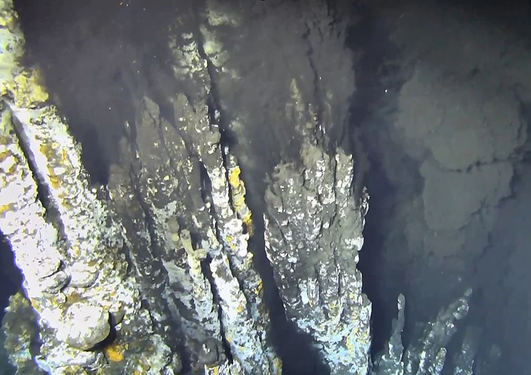Exploring the biosphere under the ocean
Underneath the ocean floor, thrives a vast biosphere which activity profoundly impacting our global environment; from the air that we breathe, to the balance of the global carbon budget. The functioning of this biosphere is what the new director at the Centre for Deep Sea Research at UiB, Steffen Leth Jørgensen, seeks to understand.

Main content
Covering 70 per cent of the Earth’s surface, the processes on and under the ocean floor is an integral part of life as we know it – in fact 1 % of all living biomass is found within the sediments of the seafloor. But the deep sea still remains the least studied environment on Earth.
Finding and closing knowledge gaps
At the Centre for Deep Sea Research at the University of Bergen, the recently appointed director Steffen Leth Jørgensen and his team are conducting pioneering research, dedicated to exploring and gaining new knowledge of geological and biological processes in the deep sea, especially on the high north and ice-covered regions.
“The research field I am studying is called geomicrobiology which investigate the influence of microbes on geological and geochemical processes and vice versa. My specific focus is on the life that we find buried deep into the sediments underneath the ocean floor, also known as the deep subseafloor biosphere”, Leth Jørgensen says.
This research area is still very young, and the deep subseafloor biosphere was not recognized until the early 1990s.
“Now 30 years later, extensive research efforts have taught us a lot about this immense biosphere and Its presence and importance is no longer debated- However, there are still many fundamental questions left unanswered. This is what excites and motivates me – trying to identify major gaps in our knowledge and then finding ways to close these gaps”, Leth Jørgensen states.
Global warming
The centre leader emphasizes that the search for new knowledge and a deeper understanding of how these systems work is not only of academic relevance.
“The deep sedimentary biosphere controls all major geochemical fluxes across the seafloor and determines the fate of the world’s largest storage of organic carbon. Hence, it matters for our global environment ranging from the composition of the air that we breathe to the balance of the global carbon budget”.
One of the main questions Leth Jørgensen is currently eager to pursue is how these ecosystems functions over time - their dynamic behavior – and what controls it.
“This is particularly important in a world that is changing due to global warming”, he says, and mentions a series of questions he wants to find the answers to in that regard:
“What happens when the oceans get warmer, sea ice is melting and carbon fluxes to the seafloor changes?” “How fast is life in the subsurface reacting to these changes and how? Is it predictable and if so, can we forecast the consequences?”.
Interdisciplinary research community
The Centre for Deep Sea Research is a leading international research centre with a highly interdisciplinary research profile, but the new director is well equipped to deal with this challenge. Leth Jørgensen has worked his entire career at the interface between different research fields at world-class research centers and for the last few years he has been the head of the Geochemistry & Geobiology group at the department of Earth Science, UiB, and an integrated part of the Centre.
Leth Jørgensen praises his colleagues at the centre.
“It is an inspiring workplace where excellent researchers from different disciplines, such as geochemistry, petrology, geophysics, data sciences and biology work together to try to understand the various deep sea processes and how they interact” he says.
Exciting results
From 2017 to 2021 Leth Jørgensen held the prestigious Trond Mohn foundation (TMS) Starting Grant, which allows excellent young researchers to build a research group around their own research at the University of Bergen.
In his project he set out to “unveil the deep marine biosphere” using methods such as big data analyses, statistics and machine learning. Amongst other important findings, Leth Jørgensen and his team successfully characterized and described more than 60 previously unknown organism from the deep subsurface, and thereby increased the understanding of the biological diversity.
The project is still yielding interesting results. His research team recently proved that increased energy supply (more food) leads to cell growth even after the cells have been starved and buried under the sea floor for almost 100.000 years.
“This might not sound like a great accomplishment”, he says; “but we have to keep in mind that until now it’s been questionable if life in the deep subsurface even grow (divide) at all or if they are just staying alive in a sort of maintenance stage that do not allow for actual growth”.
“We are currently wrapping up results that for the first time provide direct estimates of in situ growth rates in the deep subseafloor biosphere”, Leth Jørgensen says, and looks forward to presenting these findings in the near future.

